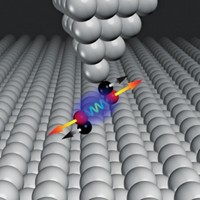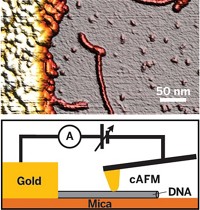Advertisement
Grab your lab coat. Let's get started
Welcome!
Welcome!
Create an account below to get 6 C&EN articles per month, receive newsletters and more - all free.
It seems this is your first time logging in online. Please enter the following information to continue.
As an ACS member you automatically get access to this site. All we need is few more details to create your reading experience.
Not you? Sign in with a different account.
Not you? Sign in with a different account.
ERROR 1
ERROR 1
ERROR 2
ERROR 2
ERROR 2
ERROR 2
ERROR 2
Password and Confirm password must match.
If you have an ACS member number, please enter it here so we can link this account to your membership. (optional)
ERROR 2
ACS values your privacy. By submitting your information, you are gaining access to C&EN and subscribing to our weekly newsletter. We use the information you provide to make your reading experience better, and we will never sell your data to third party members.
Analytical Chemistry
Nanopore-Based Screening
DNA Analysis: Method detects single molecules passing through holes in graphene
by Mitch Jacoby
September 2, 2010
| A version of this story appeared in
Volume 88, Issue 36

Great minds think alike. So it should come as no surprise that three research groups have independently developed a novel analytical procedure to detect single DNA molecules based on nanopores in graphene membranes.
The studies establish a firm basis for developing inexpensive membrane-based devices for DNA analysis (C&EN Online, March 9, 2009) and could lead to single-molecule genomic screening tools, and eventually to low-cost and personalized medical treatments.
In one of the studies, reported in Nature (DOI: 10.1038/nature09379), Harvard University physicist Slaven Garaj, together with coworkers at Harvard and Massachusetts Institute of Technology, created a device in which a graphene membrane with an electron-beam-drilled, nanosized hole was positioned on a silicon support structure.
The team applied a voltage across a pair of ionic solutions that were separated by the membrane, thereby driving the ions, including DNA, through the pore. By measuring transient changes in electrical current caused by DNA as it flowed through and momentarily blocked the pore, the group was able to detect single DNA molecules and assess their sizes and conformations.
While the Nature paper was in press, the results of very similar experiments were reported in Nano Letters. Teams led by biophysicist Cees Dekker of Delft University, in the Netherlands, and by physicist Marija Drndić of the University of Pennsylvania carried out the work (2010, 10, 2915 and 3163).
“It’s amazing to see how fast all of these groups are progressing,” says University of Washington physicist Jens H. Gundlach. He explains that they are all aiming to rapidly sequence DNA by threading one molecule at a time through pores that are narrow and short enough to distinguish each DNA nucleobase as it passes through the pore.
While these teams have been experimenting with nearly atom-thin graphene for that purpose, Gundlach’s team has been using an engineered protein, MspA, which has a built-in nanopore. His team just showed that MspA’s pore can be used to resolve individual nucleobases in DNA samples that have been modified to feature thick (double-stranded) and thin (single-stranded) segments (Proc. Natl. Acad. Sci. USA, DOI: 10.1073/pnas.1001831107).





Join the conversation
Contact the reporter
Submit a Letter to the Editor for publication
Engage with us on Twitter